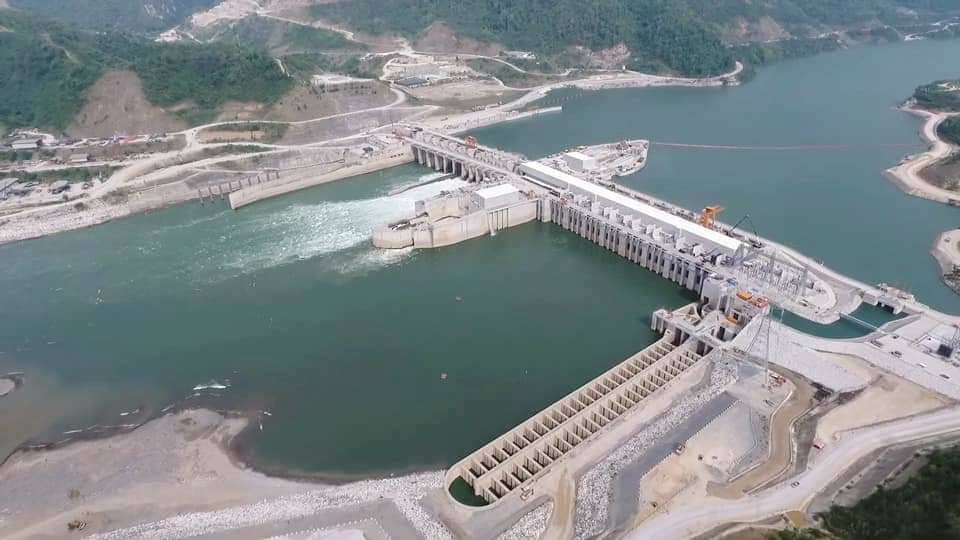位於寮國北部湄公河的沙耶武里水壩將在數日內正式啟用。沙耶武里水壩是湄公河主流下游的第一座水壩,它的啟用象徵著湄公河命運的重要轉折點。
湄公河長4,350公里,是世界第12長河,排水量世界第八。發源於青藏高原,流經中國、緬甸、寮國和泰國,接著湧入柬埔寨和越南的沖積平原和三角洲。
沙耶武里水壩的主要目的是水力發電,其95%的發電量將由泰國電力局購買。
沙耶武里水壩打從一開始就是一個爭議性的工程,許多人擔心它對河流系統的作用,包括使湄公河的洄游魚類和沈積物難以往下游移動,可能連鄰國都會受影響。
大壩對環境的影響進而威脅流域內居民的糧食來源、生計和社會文化體系。

許多專家認為,湄公河上游中國境內已經建了六座水壩,寮國甚至柬埔寨下游還要再蓋,已經讓湄公河深陷危機。
沙耶武里水壩諮詢過程中,有許多利害關係者表示關切,質疑資料和研究是否充分。
越南政府呼籲暫停所有主流上水壩的建設10年,以進一步研究、更深入地了解河流系統和水壩的可能影響。
泰國湄公河沿岸的社區代表於2012年向泰國行政法院提起訴訟,質疑泰國向沙耶武里水壩購買電力的計畫。此訴訟案別具指標性,但經過數次上訴,七年後的今日仍懸而未決。
儘管如此,沙耶武里水壩的開發並沒有停止,開發商重新設計以減輕疑慮。
後續的大壩工程計畫也持續在進行。本月,湄公河委員會宣布開始對湄公河下游的第五座主流水壩瑯勃拉邦進行事前諮商。
在沙耶武里水壩啟用前,美國非營利組織國際河網(International Rivers)發布了關於水壩的新報告。該組織邀請兩位獨立專家針對湄公河委員會今年稍早發布的沙耶武里水壩設計變更審查報告發表評論。
兩位專家分別是澳洲雪梨大學人文地理學教授賀屈(Philip Hirsch)博士和英格蘭諾桑比亞大學社會科學副教授亨森格斯(Oliver Hensengerth)博士。他們檢視沙耶武里水壩如何成為主流水壩決策模式的基準,強調「迫切需要一個真正的區域性標準程序來保護湄公河的未來。」
國際河網的聲明指出,雖然國際河網自身的立場是認為大壩的開發正在「扼殺」湄公河,但該專家評論的目的並非批評或評估湄公河委員會的管理審查報告,而是在試圖「找出關鍵點,討論它們對沙耶武里水壩和其他規劃中或興建中水壩對湄公河下游主流以及該地區內的影響。」

23日,一場針對國際河網報告的座談會在泰國曼谷外國記者俱樂部舉行,與會學者、社區和民間社團熱烈討論沙耶武里水壩工程的歷史、決策過程缺陷、進行中的活動以及對生態系統與居民的影響。
國際河網認為,沙耶武里水壩興建過程「工程先行,研究後補」的做法很不負責任。(詳見〈沙耶武里水壩設計變更審查〉報告)
湄公河沖積平原和三角洲是全世界農業產量極高、生物多樣性極豐富的水域之一,但是海平面上升、土地沉降、上游超過126個規劃中水壩以及各式各樣三角洲水利基礎設施讓人們不得不對水力發電的潛在問題感到憂心。
國際河網不是唯一一個對湄公河流域感到擔憂的環境組織。
丹麥DHI顧問集團針對湄公河三角洲進行的研究得出的結論是,「即使是現有最佳的魚道技術,也可能無法因應大量的魚類遷徙。在高峰時期,遷徙魚群最多可達每小時300萬條。此外,可能也難以滿足該流域數百種魚類有百百種遷移方式。」
根據22日在寮國首都永珍發布的最新報告《 2018年流域狀況報告》,負責管理流域水壩開發的湄公河委員會也對此表示關注。
湄公河委員會成立於1995年,是一個政府間組織,直接與柬埔寨、寮國、泰國和越南政府合作,共同管理共享水資源和湄公河的永續發展。
該組織是水務外交的區域平台,也是維持該區域永續發展的水資源管理知識中心。
湄公河委員會報告警告:「主流水流體系明顯永久性改變,沉積物被阻攔造成泥沙流量大量減少,濕地持續喪失,河流生態環境惡化,捕撈漁業的壓力不斷增加以及目前水開發設施和用水資訊共享有限」,是湄公河流域國家面臨的主要挑戰。
「我們現在必須解決這些問題,盡可能減少對環境的損害,並在僅剩的濕地和河邊生態環境消失之前加以保護,同時利用更穩定且有所增加的旱季流量,實現湄公河地區最佳永續發展。」湄公河委員會執行長An Pich Hatda博士在啟用儀式上對來自四個湄公河國家、近100位官員說。
最新的流域狀況報告建議:「必須緊急採取更積極的區域性流域規劃和管理方法,並加強系統性地共享資訊,並嚴格監控河流流量,以因應這些流域挑戰。」
In five days, the Xayaburi Hydropower Project on the Mekong River in northern Laos will formally begin operations. As the first dam on the lower Mekong mainstream, this marks a turning point for the Mekong River.
The Mekong River is 4,350 kilometers (2,703 miles) long, ranked 12th in length and eighth in water discharge in the world. The river originates in the Tibetan Plateau and flows through China, Myanmar, Laos, and Thailand before pouring into the alluvial floodplains and delta in Cambodia and Vietnam.
The main purpose of the Xayaburi dam is to produce hydroelectric power, 95 percent of which is to be purchased by the Electricity Generating Authority of Thailand.
From the outset, the Xayaburi dam was a controversial project due to widespread concerns over its expected impacts on the river system, including transboundary impacts in neighboring countries.
Major predicted impacts include the destruction of Mekong migratory fisheries and trapping of sediment, preventing it from traveling downstream.
The dam’s environmental impacts, in turn, threaten the food, livelihoods and socio-cultural systems of populations residing within the river basin.
Many experts believe that the Mekong, already suffering from the impacts of six dams installed in China on the Upper Mekong, and with more dams planned downstream in Laos and possibly Cambodia, is in crisis.
During the Xayaburi dam consultation process, many stakeholders raised concerns over the project and questioned the adequacy of the data and studies.
The Vietnamese government called for a project suspension and a 10-year moratorium on all mainstream dams pending further study to better understand the river system and the impacts of planned dams.
In Thailand, community representatives along the Mekong River filed a landmark lawsuit in the Thai Administrative Court challenging Thailand’s power purchase from the project. Originally filed in 2012, following several appeals, the lawsuit remains pending more than seven years later.
Despite this, the Xayaburi dam moved forward, with the developers undertaking a redesign in an effort to mitigate concerns.
Subsequent dam projects have followed. This month, the Mekong River Commission announced the commencement of Prior Consultation for Luang Prabang, the fifth lower Mekong mainstream dam to undergo the process.
In the lead-up to the commissioning of the Xayaburi dam, the U.S.-based nonprofit group International Rivers issued a new report on the dam. The group asked two independent experts to provide comments on the Mekong River Commission’s review of the Xayaburi redesign, released earlier this year.
The report of the experts, Dr. Philip Hirsch, professor of Human Geography at the University of Sydney, Australia; and Dr. Oliver Hensengerth, associate professor of social sciences at Northumbria University, England, examines the pattern of Xayaburi in setting a benchmark for decisions on mainstream dams and highlights “the urgent need for a truly regional approach to safeguard the Mekong’s future.”
Although International Rivers says dam development is “silencing” the Mekong River, this expert commentary is not intended as a critique or assessment of the MRC Review, said the group in a statement. “Rather, it seeks to draw out key points and discuss their implications for Xayaburi and other dams under construction or consideration on the lower Mekong mainstream and within the region.”
On Wednesday, a panel discussion of the International Rivers report with academic, community and civil society speakers at the Foreign Correspondents’ Club of Thailand in Bangkok provoked comments on the project’s history, its flawed decision-making process, the ongoing campaigns, and Xayaburi’s implications for the ecosystems and people of the Mekong Basin.
International Rivers has described the “build first, study later” approach propagated by the Xayaburi Dam process as “a dangerously irresponsible model for dam-building in the Mekong.”
To read the report, “Review of Design Changes Made for the Xayaburi Hydropower Project,” click here.
The Mekong floodplains and delta are among the most agriculturally productive and biologically diverse waterscapes of the world, but sea level rise, land subsidence, and the proposed upstream development of over 126 hydropower dams and extensive delta-based water infrastructure have raised concerns about the potential impacts on the hydrology of the region.
International Rivers is not the only environmental group with concerns about the Mekong River Basin.
A Mekong Delta Study conducted by Denmark’s DHI Consulting Group concluded it was likely “that even the best available fish passage technologies’ may not be able to handle either the massive volume of fish migrations, which during peak periods can reach up to three million fish per hour, or the diversity of migration strategies that characterise the hundreds of fish species in the basin.”
The Mekong River Commission, which governs the dam development of the basin, is also concerned, according to the latest report, State of the Basin Report 2018, released on Tuesday in Vientiane, the Laotian capital city.
Established in 1995, the Mekong River Commission, MRC, is an inter-governmental organization that works directly with the governments of Cambodia, Laos, Thailand, and Vietnam to jointly manage the shared water resources and the sustainable development of the Mekong River.
The organization serves as a regional platform for water diplomacy as well as a knowledge hub of water resources management for the sustainable development of the region.
The MRC report warns, “The apparent permanent modification of mainstream flow regime, the substantial reduction in sediment flows due to sediment trapping, the continuing loss of wetlands, the deterioration of riverine habitats, the growing pressures on capture fisheries, and the limited information sharing on current water development facilities and water use,” are some of the major challenges facing countries in the Mekong Basin.
“We need to address these issues now in order to minimize further environmental harm and protect remaining wetlands and riverine habitats before they are gone, while leveraging the benefits of more secure and increased dry season flows and achieving a more optimal and sustainable development of the Mekong basin,” Dr. An Pich Hatda, chief executive officer of the MRC Secretariat, told nearly 100 officials from the four MRC countries at the launch ceremony.
This latest State of the Basin Report advises that “a more proactive regional approach to basin planning and management, with an enhanced and systematic information sharing mechanism and robust monitoring of river flow must be put in place urgently to address these basin-wide challenges.”
※ 全文及圖片詳見:ENS









